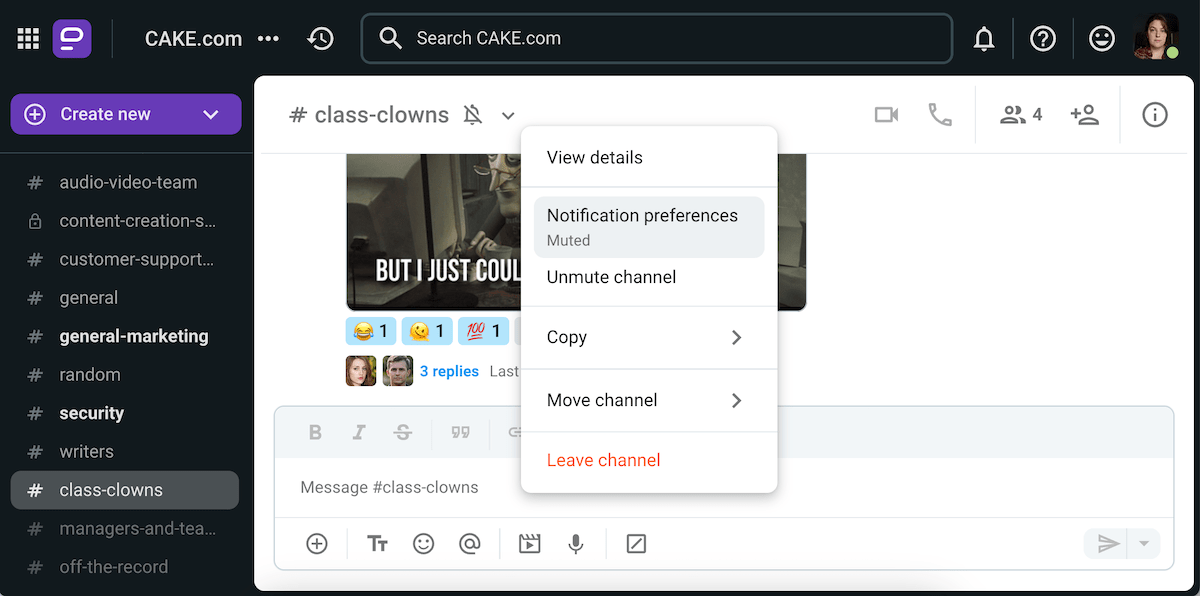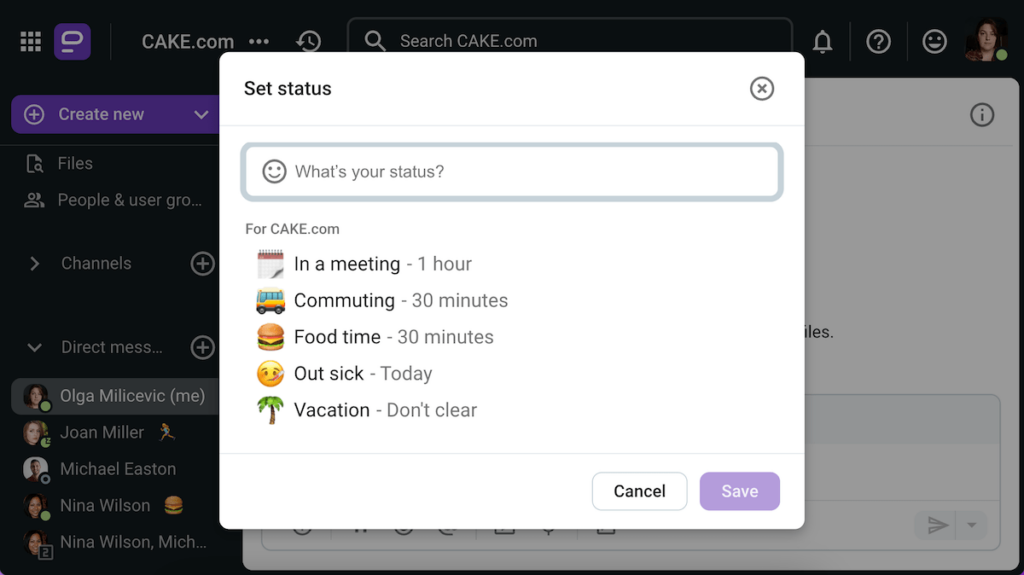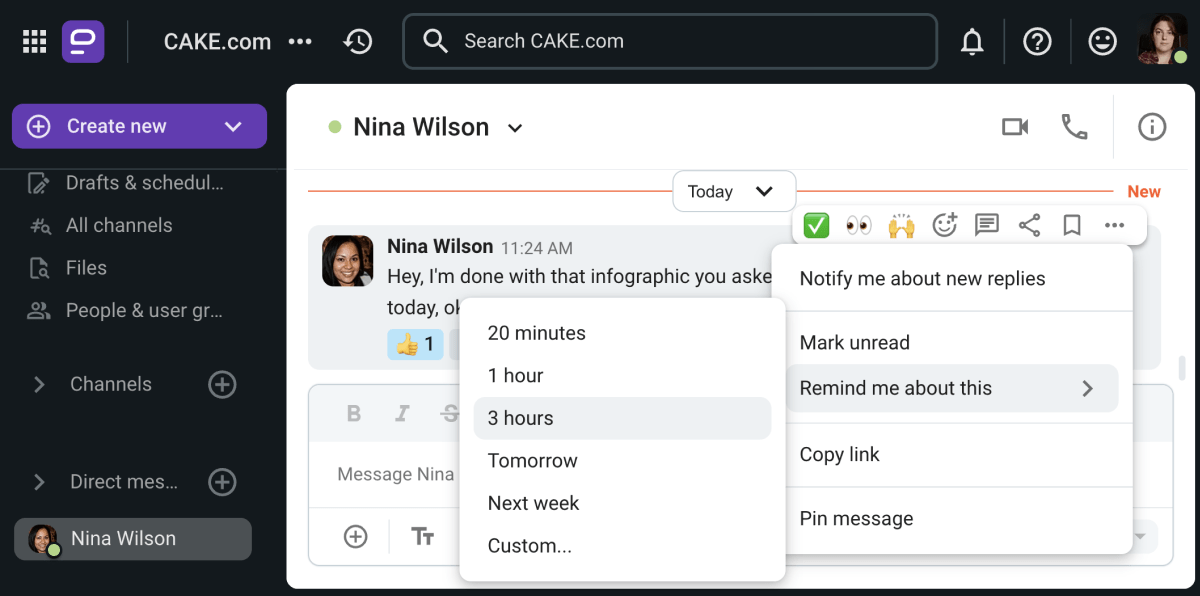Late one night, as I sat at my computer, my bloodshot eyes staring blankly at the screen, I wondered how many more last-minute client requests I could accommodate before I threw in the towel.
Looking back on the countless similar nights I’ve had, I can’t believe I ever let work eat up my private time to that degree.
Over the years, I’d sacrificed my personal email address, allowed clients to contact me through personal communication apps, and, perhaps worst of all, diligently responded to messages even outside of my work hours.
If I could go back in time knowing what I know now, I’d do my best to avoid the debilitating burnout I was headed towards.
But, you don’t have to learn these lessons the hard way — just avoid doing everything I’m about to tell you.

Table of Contents
The Nightmare on Email Street
During my stint as a freelance social media copywriter, I was inexperienced enough to forfeit my personal email address to my (in hindsight, rather demanding) collaborators.
As a result, all my work-related messages were entering the same inbox that was already stuffed to the brim with personal exchanges, newsletters, and spam.
If having to fish through my regular emails to find my clients’ messages wasn’t annoying enough, this period of my professional life also introduced me to the concept of ‘Reply All’ emails.
The feature haunted my every waking moment, as each email notification compelled me to interrupt my work day only to discover that the reply in question was not meant for me.
The sheer volume of communication was anxiety-inducing, especially because I had no way of managing or muting parts of the conversation.
On top of that, I experienced some other downsides of using email as my primary means of professional communication.
For one, sometimes, important messages would never make it into my inbox at all. Instead, they would be vanquished to my spam folder to await their eventual salvation prompted by a follow-up email.
On the other hand, when I’d need further information or guidance, I could never be sure if the people I was contacting through email would even be available to respond.
I would send an email to a client only to receive an automated response that they were out of office, leaving me without a contact I could turn to.
Naturally, this made some pretty urgent projects screech to a halt as we waited for the decision-makers to get back to work.
The Invasion of Personal Messaging Apps
Allowing professional communication to invade my personal messaging apps was another tactical error I made in my freelance days.
After seeing that email wasn’t a good option, some of my clients asked if they could contact me through a personal messaging app I already had on my phone.
I reluctantly agreed, even though I had already seen the toll mixing personal and professional communication had taken on my email inbox.
Still, the emails we’d been sending back and forth had become rather long-winded and disorganized. So, if nothing else, I’d hoped that transitioning to a messaging app would keep my collaborators’ messages short and to the point.
Unfortunately, letting them contact me through this messenger app also made them feel comfortable with texting me at all hours of the day.
And, though both this app and email could be muted to reduce distractions, I still worried about missing important messages.
Every time an important decision was made and communicated in the chat, the message would drown under a flurry of unrelated responses from various team members. So, in a way, personal messaging apps also suffered from the ‘Reply All’ curse.
In the end, I couldn’t stop the erosion of my already delicate work-life balance — I didn’t know how to defend it without stepping away from work.
Suffice to say, this experience only reinforced my belief in keeping professional and personal communication on separate platforms.
The Silence of the Notifications (or Lack Thereof)
Of course, it’s not just the personal messaging apps — even professional communication tools can be misused in a way that negatively affects your job satisfaction levels.
While working with a company that acted as a mediator between clients and content writers, I handled most of my business communication through a fairly well-known business messaging app.
Despite the occasional unreasonable client and some managerial pressure, the work suited me just fine.
However, as time went on, I realized that my mood would plummet each time I heard the sound of the app’s message notifications.
I had been conditioned to expect a minor disaster every time that ring went off — if it even did so.
At some point, I noticed that the app wouldn’t actually sound off every time I got a message, which made me feel like I had to manually check if I had missed anything throughout the day.
My lack of work experience at the time made me feel like I needed to answer all messages promptly, even if they came late into the night.
And, because my work-life balance was shaky at best, receiving those messages would prompt me to work through the night on more than one occasion.
My Year of Rest and Relaxation — Burnout Edition
Ultimately, the stress of fielding work messages across different platforms at all hours of the day made it difficult to concentrate on anything, let alone find fulfillment in my work.
To put it simply, I was burnt out.
And so, I decided to take an extended break from work to focus on recovery.
Distancing myself from work was just what I needed to realize that, going forward, I would need to take a different approach to business communication.
As luck would have it, the next job I found allowed me to use my experience with poor work communication to educate others on how they too could preserve their work-life boundaries.
So, here’s my crash course on how making the most of the business messaging app you’re using can increase your job satisfaction.
How I set work boundaries (ft. Pumble)
I am now more than a year and a half into my new job and I don’t feel burnout looming over my head the same way it once did.
What’s changed?
I keep my communication neatly organized
The main thing that’s different about how I communicate at work nowadays is that I’m much less reliant on email.
After all, all of our internal communication goes through our simple but effective team communication app, Pumble.
In the app, messages are neatly organized in public and private channels, threads, and direct messages, so I don’t feel the anxiety I used to have when I would see an email chain from a client or 50 new messages in a group chat.
💡 PUMBLE PRO TIP
Pumble is a straightforward business messaging tool you’ll use every day. Check out this guide to learn all about its basic features:
I use notification settings to keep distractions at bay
With Pumble, there’s no such thing as sending unnecessary messages.
Instead of having people communicate their understanding with a reply, we usually use emoji reactions to acknowledge any messages that don’t require a response.
For the channels in which responses are encouraged, the most effective solution comes in the form of the mute option.

Of course, making the most of those notification settings would only make sense if I could be certain that the app would let me know when I was needed in a conversation I had previously muted.
Luckily, I no longer live in fear of missing out, since I know that I can be summoned with a mention.
With that being said, though mentions are a great way to keep people in the loop even if they’ve muted a channel, I am still able to completely silence my notifications outside of my working hours.
Aside from notification preferences, I’ve also found that making the most of Pumble’s status feature has made a world of difference in the way I approach work communication.
Though our workspace does have some preselected statuses we can use, such as the burger emoji that shows up when someone is taking lunch, everything can be adjusted according to my preferences.

💡 PUMBLE PRO TIP
Want to learn more about how you can make the most of Pumble? Check out this breakdown of 10 features you have to try:
I make sure I’m not missing anything with message scheduling and reminders
If someone checks my Pumble status and sees that I’m in a meeting, on a break, or even on vacation, they can still type out their message and schedule its delivery for when I get back to work.
As a matter of etiquette, I will, of course, do the same when I see that someone I want to talk to is busy.
However, there’s another reason why I find this feature so helpful. Namely, I know myself well enough to know that I will forget what I wanted to ask if I sit on it for too long.
So, message scheduling is a wonderfully efficient way to mentally offload that task.
On the other hand, if I ever get a message I’m not ready to deal with, I don’t have to interrupt my workflow. Instead, I can set a reminder to take me back to it once I’ve finished my current task.

Protect your boundaries with Pumble
Ultimately, any remote work solution is only as good as its features, and I can confidently say that Pumble is the perfect collaboration tool in that regard.
Still, if you want to start making the most of the app, I recommend implementing some of the tips that have helped me preserve my newfound work-life balance.
If you’re a business owner, you’ll be glad to learn that Pumble is also very reasonably priced, making it ideal for smaller and medium-sized teams.
And, if you want to make sure you have everything you need to keep your business running smoothly, consider getting the CAKE.com productivity bundle, which includes Pumble as well as Clockify, our time tracking software, and Plaky, our project management solution.
Rediscover the joy of collaboration — make a free Pumble account today.




